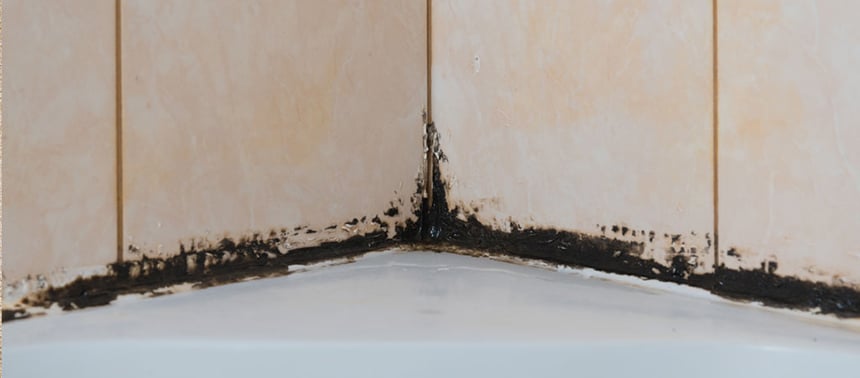
What Does Mold Smell Like?
Mold typically has a strong, musty odor, often compared to the smell of wet socks, decaying wood, or rotting leaves. The smell is caused by microbial volatile organic compounds (MVOCs) that mold releases into the air as it grows. These compounds produce the characteristic earthy, stale scent that many people associate with mold and mildew.
Common Descriptions of Mold Smells:
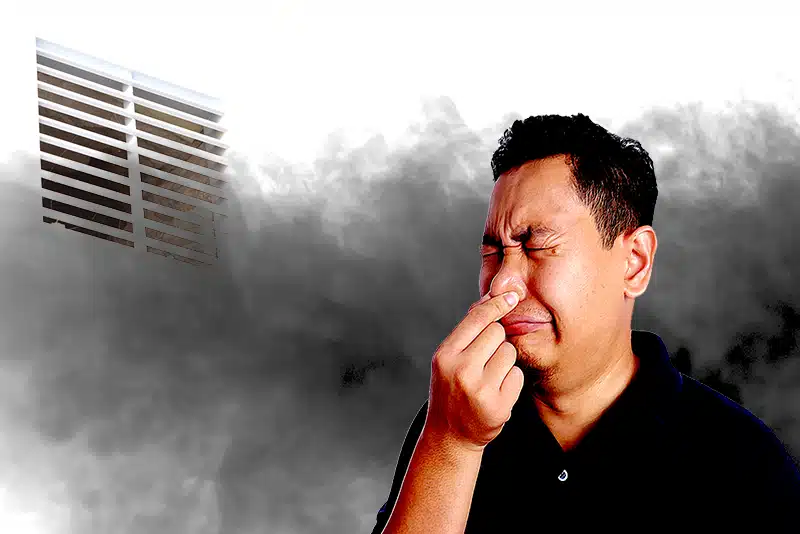
- Musty: The most common description, this smell is similar to wet, old fabric or damp wood that has been left to sit for too long.
- Earthy: Mold often smells like damp soil, fallen leaves, or a forest floor after rain.
- Pungent: As mold grows more extensively, the smell can become stronger and more offensive, resembling rotting wood or decaying matter.
- Sour or Stale: Some people describe mold as having a sour or stale smell, especially in enclosed or poorly ventilated spaces like basements.
The intensity of the smell depends on how long the mold has been growing, the type of mold, and the conditions in the room. Regardless of the specific description, the smell of mold is generally a sign that something is wrong and should not be ignored.
Where Are You Most Likely to Smell Mold?
Mold can grow almost anywhere in your home, especially in areas with excess moisture, humidity, or poor ventilation. If you detect a musty odor in any of these common locations, mold may be the culprit:
1. Bathrooms
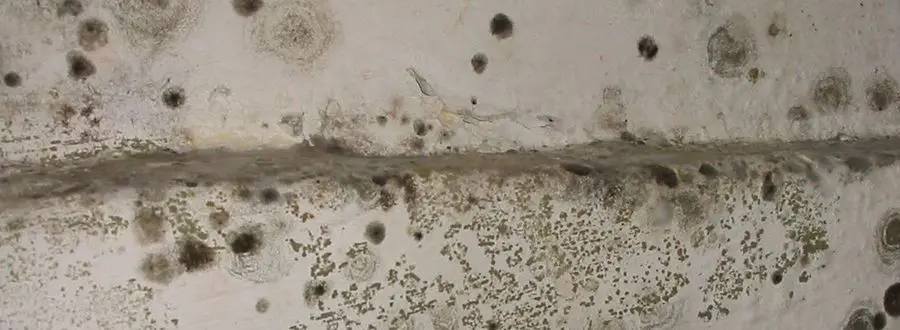
Due to frequent water use and high humidity levels, mold often forms in bathrooms—especially in grout, around sinks, and near showers. If your bathroom has poor ventilation, you may notice a persistent musty smell, which could indicate hidden mold growth.
2. Basements
Basements are prone to moisture buildup due to poor insulation, leaks, or flooding. A musty smell in your basement could signal mold growing in the walls, floors, or even stored items like cardboard boxes or old furniture.
3. Kitchens
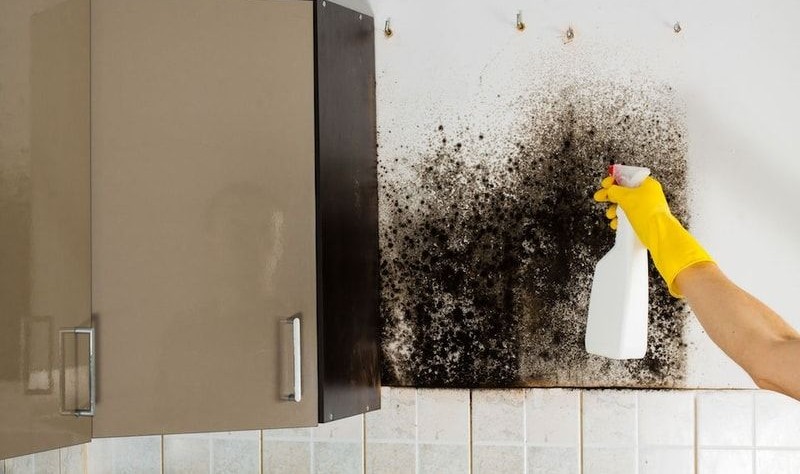
Kitchens are another common area for mold growth, particularly under sinks, around dishwashers, or behind appliances. The combination of moisture and food particles provides an ideal environment for mold to thrive.
4. Attics
Attics are often poorly ventilated, making them prime spots for mold to grow, especially if there’s a roof leak or moisture buildup. A moldy smell in your attic is often a sign of water damage or excess humidity.
5. Crawl Spaces
If you notice a musty smell coming from your crawl space, it could be a sign of mold growing due to water intrusion, poor drainage, or high humidity. Crawl spaces are often damp, dark, and difficult to inspect, making them prime locations for hidden mold growth.
For more information on the most common areas where mold grows, check out this EPA guide to mold basics.
What Should You Do If You Smell Mold?
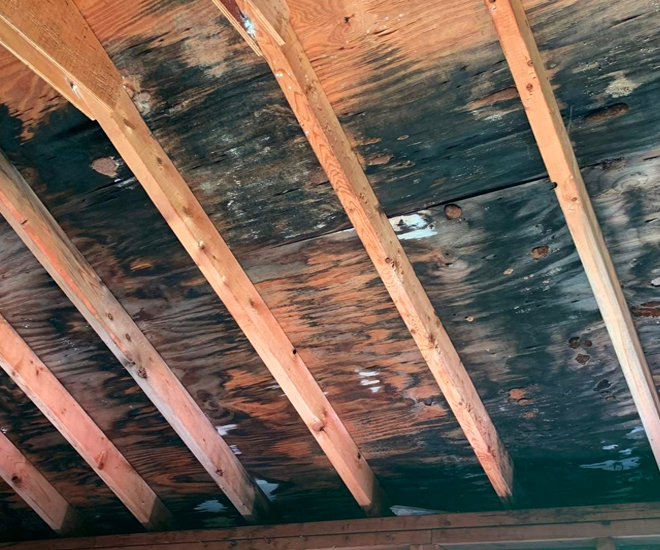
If you detect a moldy smell in your home, it’s important to take action immediately. Mold can spread quickly, and the longer it goes untreated, the more damage it can cause to your property and health. Here’s what to do if you smell mold:
| Step | What to Do |
|---|---|
| 1. Identify the Source | Check common mold-prone areas for visible signs of mold growth, such as black spots on walls, ceilings, or grout. If you can’t find the source of the smell, mold could be growing in hidden areas like behind walls or under floors. |
| 2. Improve Ventilation | Increase airflow in areas where you smell mold by opening windows or using fans. This will help reduce moisture levels and may temporarily lessen the odor. However, improving ventilation alone won’t remove existing mold. |
| 3. Address Moisture Problems | Mold needs moisture to grow, so addressing the underlying moisture problem is key. Fix any leaks, use dehumidifiers in damp areas, and ensure proper ventilation in rooms like bathrooms and kitchens. |
| 4. Clean Moldy Areas | If you find mold, clean the affected areas with a mixture of water and vinegar, baking soda, or a commercial mold cleaner. For small patches of mold, scrubbing with these solutions can help remove it. Always wear gloves and a mask when cleaning mold. |
| 5. Call a Professional | If the mold covers a large area, keeps coming back, or you suspect mold in hidden areas, call a professional mold remediation company. A professional can assess the extent of the mold problem and safely remove it, preventing it from spreading. |
If you’re unsure how to handle mold or need expert help, Citywide Mold Mitigation offers mold inspection and removal services to ensure your home stays mold-free.
Health Risks of Mold Exposure
In addition to its unpleasant smell, mold can pose serious health risks, especially for individuals with allergies, asthma, or weakened immune systems. Common symptoms of mold exposure include:
- Respiratory issues such as coughing or wheezing
- Nasal congestion and sinus irritation
- Eye, throat, or skin irritation
- Headaches
- Fatigue
In more severe cases, prolonged mold exposure can lead to respiratory infections or trigger asthma attacks. If you or your family members are experiencing any of these symptoms, especially in areas where mold is present, it’s important to take action to remove the mold and improve indoor air quality.
For more information on the health effects of mold exposure, visit the CDC’s mold information page.

FAQ
| Question | Answer |
|---|---|
| What does mold smell like? | Mold typically smells musty, damp, and earthy, often compared to wet socks or decaying wood. The smell may vary depending on the type of mold and the conditions in the room. |
| Why does mold smell? | Mold releases microbial volatile organic compounds (MVOCs) into the air as it grows, creating the musty, stale odor that many people associate with mold. |
| Is a musty smell always mold? | While a musty smell often indicates mold, it can also be caused by mildew or other moisture issues. It’s important to investigate the source of the smell to determine whether mold is present. |
| How can I get rid of mold smells in my home? | To eliminate mold smells, you need to remove the mold itself. Clean affected areas with vinegar, baking soda, or a commercial cleaner, improve ventilation, and address any moisture problems. For larger mold issues, call a professional mold remediation service like Citywide Mold Mitigation. |
| Can mold grow in places I can’t see? | Yes, mold can grow behind walls, under flooring, or in other hidden areas where moisture is present. If you smell mold but can’t find the source, it may be growing in a hidden location. |
If you’re dealing with mold in your home and need professional help, contact Citywide Mold Mitigation today for expert mold removal and prevention services.

